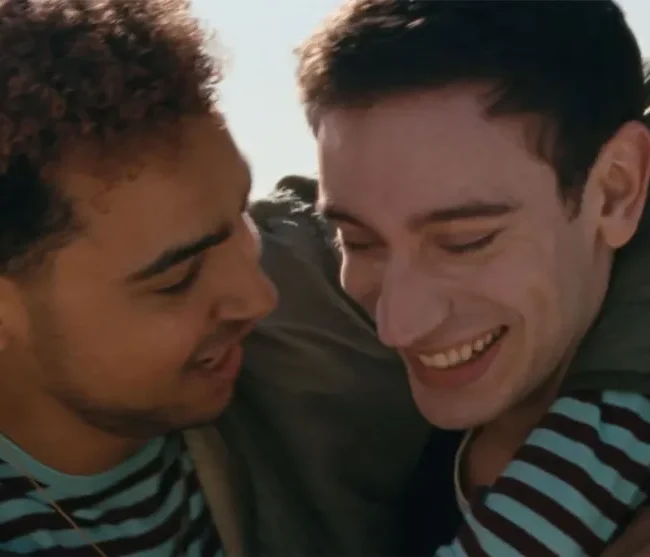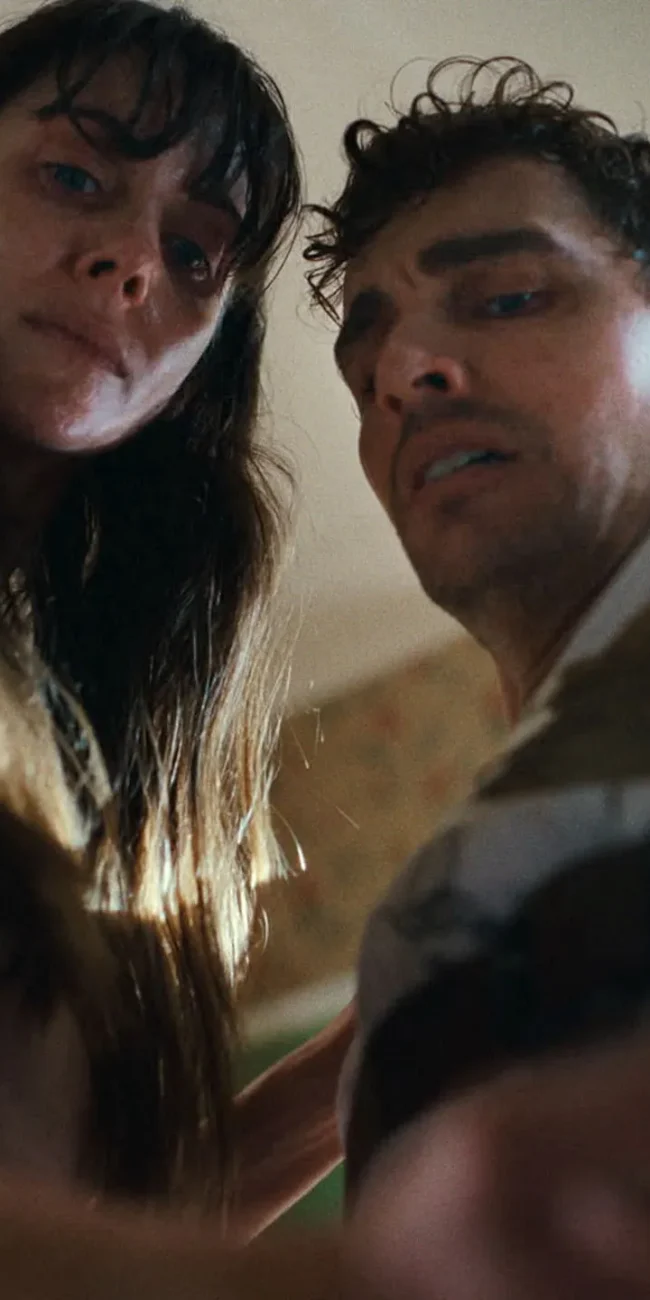A Conversation with Alexandre O. Philippe (MEMORY: THE ORIGINS OF ALIEN)
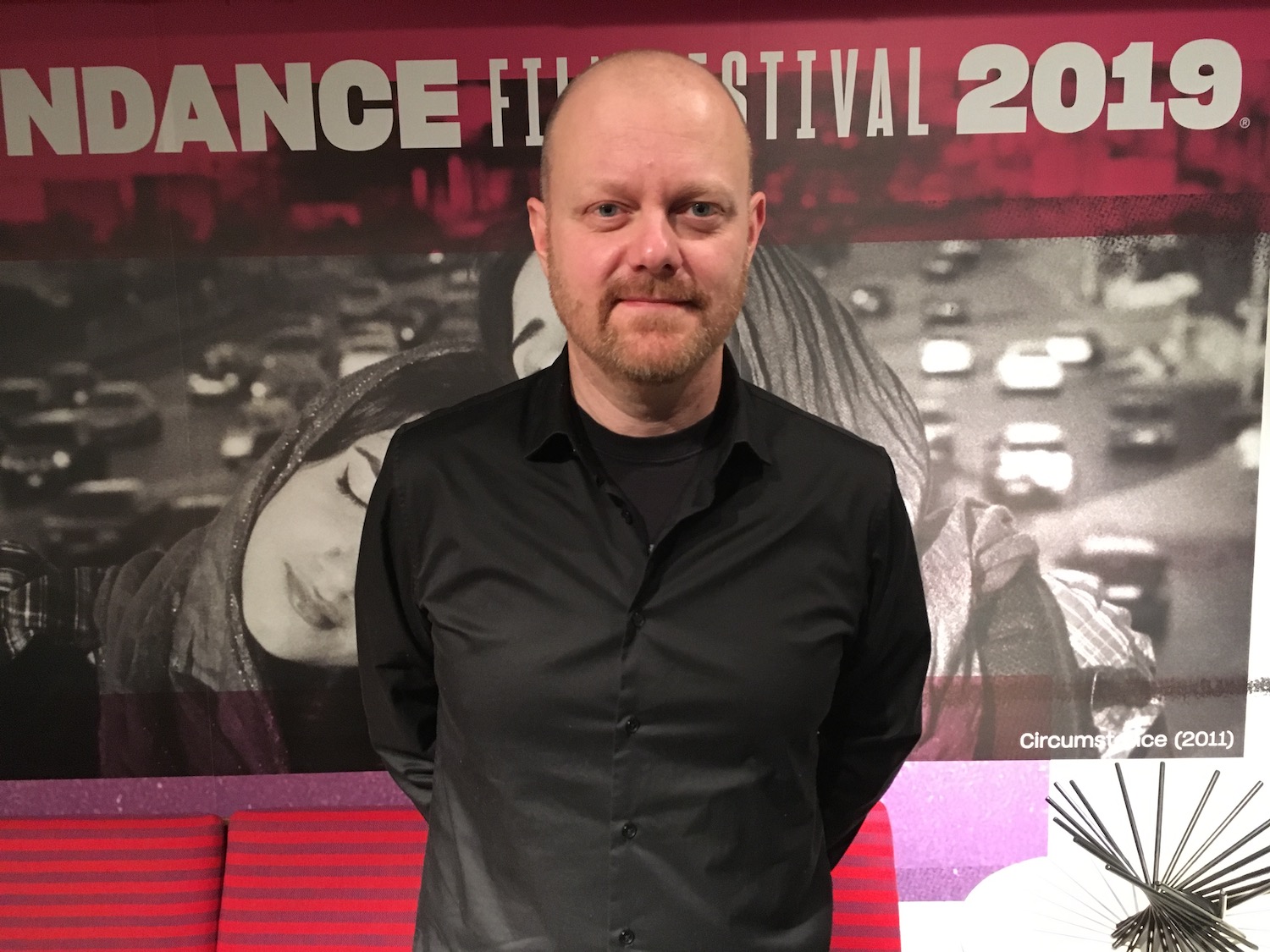
I met with director Alexandre O. Philippe at the Sundance Film Festival on Saturday, January 26, 2019, to discuss his documentary Memory: The Origins of Alien (which I also reviewed). The film dives into the rich history of the making of the 1979 Alien, directed by Ridley Scott, written by Dan O’Bannon and designed by H.R. Giger, with special emphasis on the famous chest-burster scene where the monster explodes out of actor John Hurt’s torso. Philippe also spends a lot of time dissecting the movie’s legacy and layers of meaning. It’s a densely packed exploration of one of the most important science-fiction films of its era (or of any era, really). Here is a condensed digest of our conversation, edited for length and clarity.
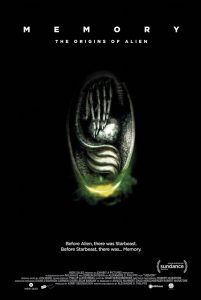 Hammer to Nail: So, I’ve seen three of your films: Doc of the Dead, 78/52: Hitchcock’s Shower Scene and now Memory: The Origins of Alien, all of which I really enjoyed.
Hammer to Nail: So, I’ve seen three of your films: Doc of the Dead, 78/52: Hitchcock’s Shower Scene and now Memory: The Origins of Alien, all of which I really enjoyed.
Alexandre O. Philippe: Thank you very much.
HtN: And in all of which you demonstrate, in different ways, your love of a certain kind of body horror. I’m taking that term directly from Memory: The Origins of Alien, by the way.
AOP: Sure.
HtN: Whence your interest in blood and guts?
AOP: Ahhh, that’s a very interesting question. When I was a kid in Switzerland, where I was raised, I watched a lot of horror films, mostly on VHS. I remember having these very powerful experiences with, specifically, Night of the Living Dead and Scanners. The head-explosion scene…
HtN: Which you feature in Memory: The Origins of Alien…
AOP: Yes. It left such an impression on me. I remember going frame by frame on my VHS player trying to figure out, “Oh, my gosh, how did they do that?” And I wasn’t very old. I was just trying to understand how that was done and I don’t know, maybe that was the moment that led to this. I’m not entirely sure but I think definitely my passion for horror film, for horror cinema, just goes way back. Yeah.
HtN: In your passion for horror film, are there limits? Are there things that you don’t like? For example, I am not a fan of what I call “gore-no.” The films that go too far, like the Saw or Hostel films.
AOP: Yeah, exactly. The torture porn, as I would call it, because I’m not really sure what those movies do. I mean Psycho is a brutal movie, but it’s a movie that really, as Alien does, taps into our unconscious with very strong, powerful ideas and images that you can keep on packing and unpacking and you’ll never get to the bottom of it. And ideas that in fact make us think very profoundly and deeply about our society, and ideas that I think we need to discuss as humans. Seeing somebody on a chair being tortured gratuitously just for the sake of horror, I’m not really sure what it does to us. So, I’m totally with you on that. I think I draw the line there. Yeah.
HtN: Yeah. So, I was going to ask this question later, but since you brought up the unpacking of the layers, there really is so much in your film, from the Furies to repressed urges, Francis Bacon, Joseph Conrad and so much more. What was your research process like? Did you have a lot of people working with you to gather that material? Did you do most of that yourself, initially?
AOP: I did most of that myself, actually. We don’t really have the budget right now for that kind of a research assistant. And I quite frankly like to dig myself into those topics and then bounce a lot of stuff off of Kerry [Deignan Roy], my producer, and we have many conversations about those things. But I mean I’m a nerd, obviously, and I love to do that kinds of research. And in this particular film I had to really trust my intuition. It’s a film and also a memory that came, to a certain extent, from the unconscious.
The opening sequence with the Greek Furies, all of that sort of connection is something that if I put on my analytical brain, I would go, “Oh, maybe I’m going a little too far here. Maybe this is a little too esoteric.” But no, I think it works and I’m standing by it completely, because I think those are ideas that are very important to reframing Alien, especially within the context of today. It is the 40th anniversary now and Alien was dealing with ideas and images that we needed to process as a collective and that we still need to process as a collective today.
HtN: Right. So was there something that you didn’t know beforehand in doing all this research that you discovered that was particularly meaningful to you? Because there’s so much here! What was the fact that most surprised you and most excited you?
AOP: I mean, yeah, as you said that there’s so much there. I think that very early on I was on the path of Greek mythology, the Furies and the connection to the triptych by Francis Bacon of the three studies for figures at the base of a crucifixion. So that was an area that I was exploring. I felt I had a pretty good handle on it. And then Les Barany, who’s one of our executive producers and was the agent of H.R. Giger, pointed me in the direction of Egyptian mythology and the influences of Egyptian mythology on Giger and therefore on the xenomorph and on Alien. And that was not an area that I was actually planning on exploring that deeply. But I’m really glad that I did.
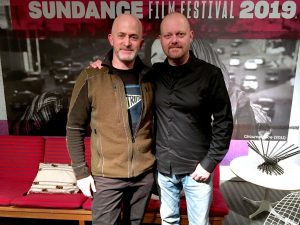
Filmmaker Alexandre O. Philippe and our Chris Reed
HtN: Well, it’s fascinating, as is so much of the film. I’m curious, towards the end of the film, you talk about how Alien was shot anamorphically and then I realized how widescreen your frame was. Did you match that aspect ratio?
AOP: Yeah. We had the exact same. We shot it 16:9, but we shot it 16:9 with the intent to give it a 2.35:1 aspect ratio.
HtN: And speaking of the aesthetic of the film, you have a variety of really fascinating angles and shot sizes in each talking-head interview. What was the process of developing that aesthetic for the interviews?
AOP: Well, the whole idea of the style of Memory was always going to be that these interviewees were going to be in the bowels of the derelict alien ship, in a way. So it’s this really deep, dark, cavernous place with just one light source. And so we went pretty extreme. I mean every interview that we shot was in this…I mean this is a black void essentially with just a single light source and you have a very…We always had a fairly wide shot initially to give it that sense that they’re sort of lost in that void because as the opening sequence sets it up, the moment you enter the darkness of the cave, you stay in the dark and you don’t emerge until the very end of the film when the sun finally comes up and the warm colors come back at that point.
So everything then had to sort of follow that format in a way. And I wanted to honor obviously the theatrical, original aspect ratio of Alien, that was very important to me. So, there are a few clips obviously from different movies that have different aspect ratios and we always respect those particular aspect ratios. I’m a big believer in not cropping the frame. I’m kind of a purist in that way. But all that aside everything follows the 2.35:1 aspect ratio.
HtN: I also really liked what you do with the archival interviews, that sort of TV screen within the frame. How did you decide on that?
AOP: So we actually shot on a kind of spaceship set. That’s where we actually shot the Furies for the opening sequence. And so there’s all these fake screens that did not actually work. And all this archival footage was going to be essentially transmissions from outer space on the deck of the spaceship. So that was always the idea.
HtN: Interesting. So, you have many great interviews, including Tom Skerritt and all these experts and film critics. I really love Ben Mankiewicz, by the way, from Turner Classic Movies.
AOP: Ben is awesome.
HtN: Yeah. But you don’t have new footage of Ridley Scott. Why is that?
AOP: Well, we approached him a few times and it didn’t work out. I will say the good news is that reps from Scott Free [Ridley Scott’s production company] came to watch the film at the premiere and they loved it and they requested us to send a screener to Ridley, who wants to see it. So that makes me very happy. I mean I’m obviously a huge fan.
But I will say, though, that in some strange way, I think it worked out well that, in terms of the serendipity of it, because the film is essentially an essay about the symbiosis between Dan O’Bannon, H.R. Giger and Ridley Scott. And since Dan and Giger are gone, to have Ridley weigh in personally, I think it would give it a different weight. So I’m kind of glad, in a way, that it worked out that way. I just really hope that he appreciates the film. That’s very important to me.
HtN: I hadn’t thought of that, but you’re right, because the other two are dead and you only have them in archival, so by having Ridley Scott also only in archival …
AOP: That’s right.
HtN: …then that aesthetic makes sense if you’re trying to set up this dialogue between the three of them.
AOP: Exactly. Exactly. And I think it would be a different film in a way. So sometimes your disappointment works out…Because of course there was the disappointment like, “Ahhh, we can’t reach Ridley. We can’t get a yes. Who else can we talk to, to try and get him in the film?” And then you realize, “Well maybe it’s not meant to be. Maybe this is not this kind of a film.” But like I said, I’m thrilled that he’s heard apparently very good things about it. He’s very excited to see it, I think. And I just really hope he likes it. Yeah.
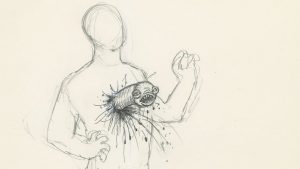 HtN: So among the many things that I enjoyed in your film, including learning that Ridley Scott had operated the camera for most of the movie himself, which I didn’t know, was of course all the behind-the-scenes of the chest-burster scene, which you certainly deconstruct in many, many ways. You really get into the nitty-gritty details of that particular scene. Were there other moments in the film that you were perhaps going to take apart or examine equally but weren’t able to because of time?
HtN: So among the many things that I enjoyed in your film, including learning that Ridley Scott had operated the camera for most of the movie himself, which I didn’t know, was of course all the behind-the-scenes of the chest-burster scene, which you certainly deconstruct in many, many ways. You really get into the nitty-gritty details of that particular scene. Were there other moments in the film that you were perhaps going to take apart or examine equally but weren’t able to because of time?
AOP: It was always going to be that way. Making a film about the chest-burster scene is a very different beast than making a film about the Psycho shower scene. I realized very quickly in the process that I couldn’t approach them in the same way; the same kind of deconstruction just wouldn’t work or it would become a very extended behind-the-scenes making-of which is not what Memory is about. So, to me, what I’m really interested in is the emergence of the chest-burster as the main moment of Alien and everything that happened prior, dating back to Dan O’Bannon’s childhood to his early ideas and concepts back in 1971 and the script called “Memory,” of which there are two versions. All the influences, everything culminated in the chest-burster, and it is the one scene that got the project green-lit. Therefore, you could actually argue it is the one scene that got the franchise to become a franchise.
But then where it becomes interesting in the making is that if that scene had not worked … and my God, so many things could have gone wrong, right? It could have been ridiculous. I mean you’re talking about a puppet on a stick, for crying out loud, right? So it could have gone spectacularly wrong, and yet it didn’t. So that’s what’s interesting to me and fascinating about the making is all the things that happened, you know: Ridley’s craft, the intent, the genius of the crew, everything that happened but also the happy accidents, the things that didn’t work, that turned out to be just wonderful for the scene. All of that had to happen for Alien to be a success, because if you don’t have a successful chest-burster scene, you don’t have a successful movie. And it becomes, once again, just a B-movie.
HtN: Right. And of course it’s so much more.
AOP: Oh my God. Yeah, because there’s many B-movies that treated a very similar story, from Queen of Blood to It! The Terror from Beyond Space. You’ve got underground comic books that deal with similar ideas. But everything was again, treated in a sort of a B-picture, underground kind of way. This is the first time that it became a major motion picture.
HtN: In the same way that superhero films used to be relegated to B-status…
AOP: That’s right.
HtN: …and now with bigger budgets they become much more, right?
AOP: That’s right. And in this particular case it is because of the execution. Alien does not become an A-movie without the vision of Dan O’Bannon, without the extraordinary contributions of Giger as an artist, and without Scott being able to execute it with the vision that he had. So you needed those three visionaries to make Alien what it was.
HtN: And I think you made a documentary that is worthy of the original film. So thank you very much.
AOP: Oh, well thank you so much!
– Christopher Llewellyn Reed (@ChrisReedFilm)
Like what you see here on Hammer to Nail? Why not pay just $1.00 per month via Patreon to help keep us going?








